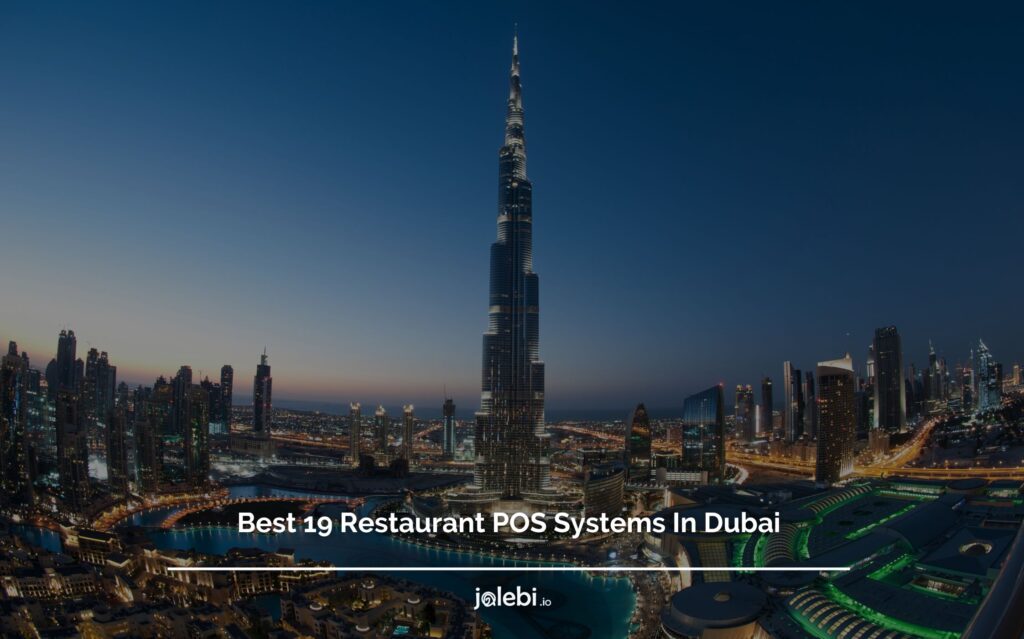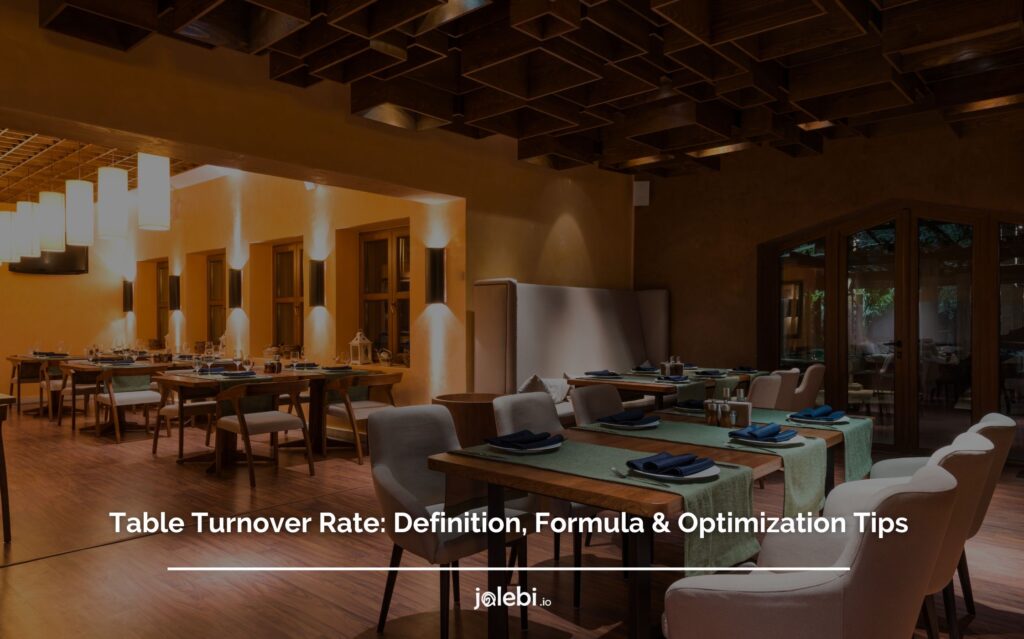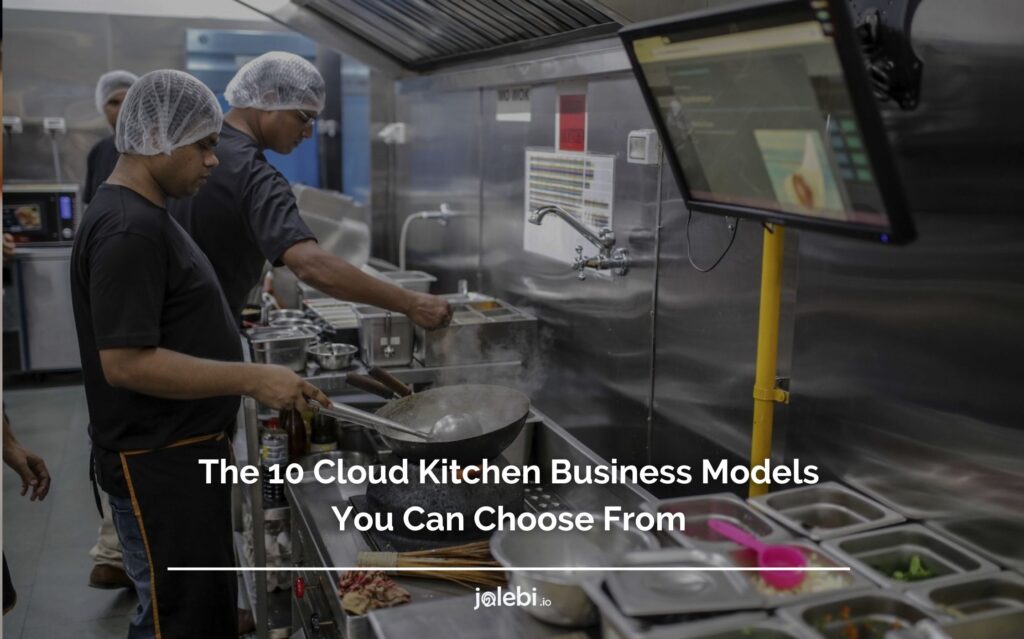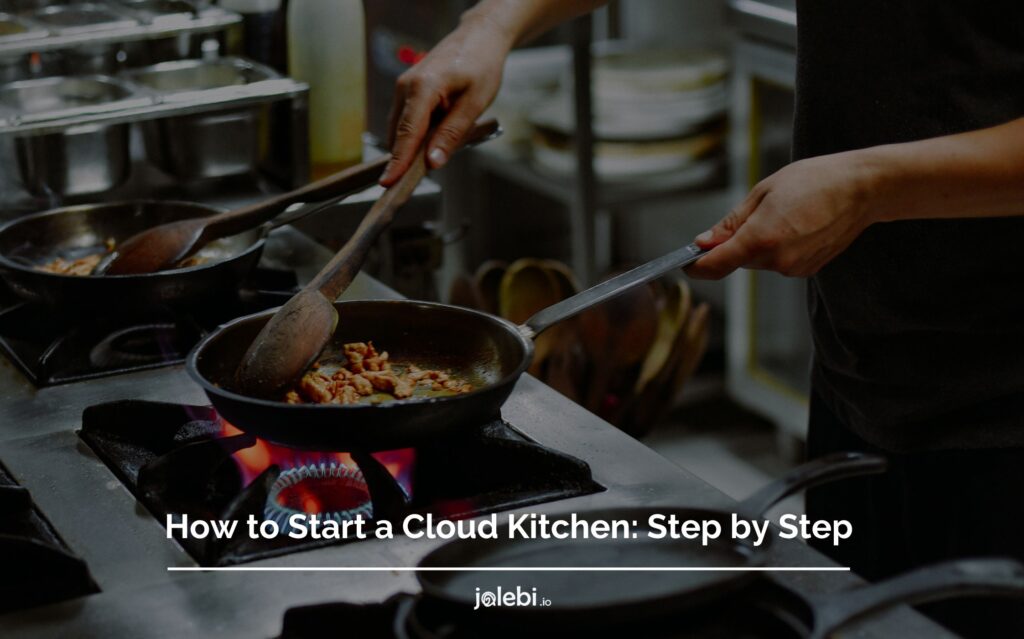Table of Contents

Managing your restaurant’s supply chain is a complex task. Many restaurants often fail to meet the daily requirements of their customers due to poor management of their supply chain.
To effectively manage your restaurant’s supply chain, you need to understand the various components of the supply chain and how they work together.
With 79% of industries achieving more revenue than their competitors due to effective restaurant supply chain restaurant supply chain management system, having a streamlined supply chain in place has become a necessity.
Are you wondering how to simplify your restaurant supply chain management in restaurant industry and reap the benefits of revenue and better performance?
This blog post is the perfect solution for you! We will share 15 tips about restaurant supply chain solution in restaurant industry to simplify your supply chain management.
What Is Supply Chain Management In Restaurant Industry?
In the restaurant industry, supply chain management is the process of coordinating and managing all of the resources and activities needed to bring a food product from farm to table.
Supply chain software for restaurants includes everything from procuring raw ingredients to manufacturing and packaging finished products, to distributing them to retail outlets.
What is restaurant food supply chain?
The restaurant food supply chain refers to the complex network of processes and entities involved in sourcing, procuring, storing, and delivering food and ingredients to a restaurant.
Food service supply chain encompasses everything from suppliers and distributors to inventory management and the kitchen’s utilization of these supplies.
In essence, food service supply chain is the lifeline that ensures a restaurant has the necessary ingredients to prepare and serve its menu items to customers.
Effective management of the food service supply chain is crucial for maintaining quality, minimizing waste, and controlling costs in a restaurant management system.
12 Benefits Of Supply Chain Management
Now that you know what is supply chain management in restaurant industry, it is essential to know the benefits.one benefit of being associated with a chain restaurant is the established brand recognition and customer loyalty that often comes with it. The other benefits are:
1- Improved Efficiency
Perhaps most importantly, supply chain management can help to improve the efficiency of your business operations.
By streamlining supply chain for restaurants, you can reduce costs and improve overall profitability.
2- Increased Customer Satisfaction
According to 81% of customers, customers would repurchase from a brand they have a positive experience with.
Restaurant supply chain management system can also help to improve customer satisfaction levels.
3- Better Environmental Performance
Finally, supply chain management industry in Pakistan can also help to improve your business’s environmental performance.
By working with suppliers to reduce waste and emissions, you can make your business more sustainable.
4- Cost Reduction:
Effective supply chain management can lead to cost reduction through better inventory control, minimized wastage, and optimized procurement practices.
5- Faster Response to Market Trends:
A well-managed supply chain allows restaurants to adapt quickly to changing market trends and customer preferences, ensuring the availability of popular items.
6- Enhanced Product Quality:
Ensuring a consistent supply of high-quality ingredients can result in better food quality and customer satisfaction.
7- Risk Mitigation:
Robust supply chain management can help mitigate risks related to supply disruptions, food safety, and regulatory compliance.
8- Global Sourcing:
It enables the sourcing of unique or exotic ingredients from various regions, diversifying menu options, and attracting a broader customer base.
9- Improved Data Insights:
Modern supply chain technologies provide valuable data and analytics, allowing restaurants to make data-driven decisions for better performance.
10- Competitive Advantage:
A well-managed supply chain can give a restaurant a competitive edge by delivering cost savings and improved customer service, thus differentiating it from competitors.
11- Sustainability:
Focusing on sustainable sourcing and ethical practices can enhance your brand’s reputation and attract environmentally conscious customers.
12- Supplier Relationships:
Strong supplier relationships can lead to preferential treatment, better pricing, and a more reliable supply chain.
These benefits collectively contribute to the overall success and sustainability of a restaurant business.
15 Quick Service Restaurant Management Tips
If you’re in the restaurant business, then you know that having a well-run restaurant supply chain solutions is critical to success.
After all, your customers expect fresh, delicious food every time they visit, and if your supplies are delayed or of low quality, it will reflect poorly on your business.
Fortunately, there are a few simple, quick-service restaurant management tips you can follow to ensure that your restaurant’s supply chain is running smoothly. Here are eight of the most important ones.
1- Know Your Suppliers
The first step to effective restaurant supply chain management in restaurant industry is knowing who your suppliers are and establishing good relationships with them.
This way, you can be sure that they’ll always have the supplies you need in stock and that they’ll be able to deliver them on time.
Create a linking system linking system between customers and vendors to keep track of suppliers. Such systems between customers and vendors can help businesses keep track of their inventory, sales, and customers.
Furthermore, if there are any issues with the quality of the supplies, you’ll be able to resolve them quickly.
2- Have A Backup Plan
No matter how well you plan, there will always be times when something goes wrong with your restaurant supply chain solutions.
That’s why it’s important to have a backup plan in place so that you can still serve your customers even if one of your suppliers is having difficulties.
For example, you might want to keep some extra supplies on hand or find another supplier who can provide the same products.
3- Be Proactive About Problems
If there’s a problem with your supply chain, it’s important to be proactive about solving it. The sooner you identify the issue and take steps to fix it, the better.
Not only will you avoid costly delays and disruptions, but you’ll also build trust with your customers and suppliers.
If you’re looking to streamline your restaurant’s supply chain management process and detect problems immediately, jalebi’s restaurant management platform is the perfect solution.
With jalebi, you can track every step of the process – from ordering supplies to serving customers – so you can identify any bottlenecks or issues right away.
4- Forecast Future Demand
If you want to streamline your supply chain management, you always need to predict future demand. It is one of the best quick-service restaurant management tips that will help you avoid any potential disruptions and ensure that your inventory is always adequate.
To do this, you need to keep track of industry trends and developments, as well as your own company’s sales data.
jalebi is a great platform for visualizing sales data and making forecasts about future demand.
With jalebi, you can see trends in customer behavior and make informed decisions about how to adjust your supply chain accordingly.
5- Leverage Supply Chain Management Platforms
Your restaurant’s success depends on having a well-run supply chain. That means keeping track of inventory, knowing what products you need to order and when, and ensuring that your suppliers are reliable.
A supply chain management platform like Jalebi can help simplify all of this by integrating with your CRM and giving you a central place to manage everything. w
You can keep track of what products you have in stock, so you always know when it’s time to reorder.
6- Ensure Food Safety
In recent years, food safety has become an increasingly important issue for both consumers and businesses.
With the globalization of the food supply chain, it is essential to ensure that food safety is a priority throughout the entire process.
From farm to table, there are many opportunities for contamination to occur. However, by implementing efficient supply chain management practices, businesses can help to ensure that food safety is a top priority.
With jalebi, you can track your inventory levels and receive alerts when it’s time to restock. This way, you’ll never have to worry about your food going bad and costing you money.
7- Conduct A Price Comparative Analysis
By understanding the prices of your competitors’ products, you can make informed decisions about your own pricing strategy.
A price comparative analysis can help you identify opportunities to improve your margins and better manage your supply chain.
You can access a list of suppliers that are essential to your business in the MENA region. Here are some of the main gulf food suppliers that you should consider for your restaurant business.
- Horeca
- Chef Middle East LLC
- GMA Imports
- All Food Co
- Middle East Food Company
8- Prioritize Quality Consistency Over Prices
If you want an efficient supply chain, make sure you prioritize consistency over prices during the procurement process.
By ensuring that the products and materials you source are of the highest quality consistently, you can avoid costly delays and disruptions further down the line while procuring products.
What’s more, high-quality products are more likely to meet your customers’ expectations, leading to happier customers and repeat business.
In short, consistent quality should be your top priority when it comes to your supply chain.
9. Ensure Your Staff Feels Valued
The success of a restaurant isn’t just about food; it’s about the people who serve it. Recognize achievements, whether through an ‘Employee of the Month program or simply by voicing appreciation for a job well done.
Consider offering regular training opportunities, as well-trained staff can better handle supply chain tasks, from inventory checks to effective use of ingredients.
10. Revamp Your Menu
A menu isn’t just a list of dishes; it’s a representation of your brand, culture, and the experience you want to offer.
Periodically reassessing your menu keeps it fresh and in line with current trends.
This can also help in streamlining your supply chain, as you’ll be able to focus on sourcing specific ingredients and eliminate those that aren’t popular or don’t contribute significantly to your brand.
11. Be Consistent With Marketing
A consistent marketing approach keeps your brand top of mind for customers.
Utilize various channels, from social media to local advertisements, ensuring that your messaging is uniform.
This consistency not only attracts and retains customers but can also help in forecasting demand.
When you market effectively and consistently, you can anticipate busy periods and ensure your supply chain is ready to handle the increased load.
12. Suggest Hosting Events
Events provide a dual benefit: driving business and strengthening community ties.
If you’re hosting a special seafood night, you can bulk order specific seafood items, streamlining supply and reducing costs.
Collaborate with local businesses, perhaps a nearby vineyard for a wine-tasting evening.
Such partnerships can also simplify supply chain processes, and mutual promotion can expand your clientele base.
13. Experiment With Promotions
Running promotions or discounts can be a great way to attract customers during off-peak hours or days.
However, it’s essential to balance these deals to ensure profitability and to manage inventory effectively.
If you’re offering a promotion on a particular dish, ensure you have the necessary supplies to meet the expected demand.
14. Pay Attention To Reviews
Online review platforms like Yelp or TripAdvisor can provide a goldmine of feedback. While positive reviews boost your reputation, negative ones offer critical insights.
If customers consistently mention that a dish was out of stock or ingredients weren’t fresh, it’s a clear sign that your supply chain needs attention.
Address concerns, respond politely to reviewers, and use their feedback as a tool to refine both front-of-house and back-of-house operations.
15. Make Work Fun
A positive work environment fosters creativity, collaboration, and dedication which makes it one of the best quick-service restaurant management tips.
By introducing team-building activities, celebrating achievements, or even just ensuring a relaxed atmosphere, you can boost morale.
When staff enjoy coming to work, they’re more likely to be attentive, efficient, and engaged in their roles.
This enthusiasm and dedication can translate into more effective management of supplies, as everyone will be invested in ensuring the restaurant’s success.
When considering all these quick-service restaurant management tips, remember that the restaurant business thrives on detail.
It’s not just about the big decisions but also about the daily minutiae, from ensuring the freshest ingredients to making sure each staff member feels valued.
Manage Your Supply Chain For Restaurants With Jalebi
If you’re looking for a way to streamline your restaurant’s supply chain operations, jalebi can help. Jalebi is a powerful tool that can help you manage your restaurant’s supply chain effectively.
We offer a comprehensive solution that covers everything from sourcing and procurement to inventory management and delivery.
Why Choose jalebi?
- Streamlines Suppliers With CRM
Our CRM system ensures that all of your suppliers are kept track of and organized, so you can focus on more important things.
With jalebi, you’ll never have to worry about losing crucial information or falling behind on orders.
- Facilitates Tracking Inventory
With jalebi, you can track your inventory levels, suppliers, and orders easily. This gives you greater control over your operations and helps you avoid potential problems down the road.
- Forecasts Future Demand
As a restaurant owner, you know that one of the keys to success is keeping your inventory and staffing levels in line with customer demand.
Too much food wastage and not enough staff can lead to long wait times and unhappy customers. jalebi’s restaurant management platform can help take the guesswork out of forecasting future demands for your eatery.
In short, jalebi is an essential tool for any restaurant owner or manager who wants to streamline their operation and improve their bottom line.Contact us today to learn more about how we can help you manage your restaurant’s supply chain.
Final Thoughts
Having an efficient supply chain in place streamlines all the major restaurant operations.
Now that you are familiar with the 15 tips for managing your restaurant’s supply chain, incorporate these into your daily practices and witness your restaurant’s growth in no time.
Frequently Asked Questions
1. What is the role of supply chain management in the quick service restaurant?
In today’s fast-paced world, quick-service restaurants need to be able to rely on their supply chain management to keep up with the demand.
A strong and efficient supply chain is essential in ensuring that there is a consistent flow of ingredients and other necessary supplies.
Without this, quick-service restaurants would be unable to keep up with the demands of their customers.
2. What are the main goals of supply chain management?
The main goals of supply chain management are to ensure that the correct products are delivered to the customer at the right time, in the right quantity, and at the right price.
3. What are the 4 pillars of the supply chain?
- Demand
- Supply
- Process
- Environment ecosystem
4. How can I be successful in supply chain management?
To succeed in supply chain management for restaurant operations, focus on:
Effective Inventory Control:
- Maintain precise inventory levels using technology to optimize ordering and reduce waste.
Strong Supplier Relationships:
- Build reliable and communicative partnerships with suppliers, negotiating favorable terms and pricing.
Cost Management:
- Monitor and control costs associated with procurement, storage, and transportation to align with budget.
Efficient Processes:
- Streamline supply chain processes to minimize delays and improve overall efficiency.
Accurate Demand Forecasting:
- Use data analysis to predict customer demand and adjust inventory accordingly, avoiding overstocking or shortages.
Sustainability Practices:
- Implement eco-friendly sourcing and waste reduction strategies for long-term sustainability.
Adaptability and Communication:
- Stay updated on industry trends and adapt strategies accordingly, maintaining clear communication with all stakeholders.
Quality Assurance:
- Enforce stringent quality control measures to ensure consistent and high-quality supplies.
Risk Mitigation:
- Identify and prepare for potential risks like supply disruptions through diversification and contingency planning.
5. What are the 5 supply chain management strategies?
In restaurant supply chain management system, five crucial strategies include:
- Demand Forecasting and Planning: Accurately predicting customer demand based on data analysis and market trends to optimize production schedules and reduce waste.
- Supplier Relationship Management (SRM): Cultivating strong, beneficial relationships with suppliers to secure favorable terms, ensure timely deliveries, and maintain a reliable and cost-effective supply chain.
- Inventory Management: Efficiently managing inventory levels through just-in-time (JIT) systems, real-time tracking, and regular audits to control costs and minimize waste.
- Quality Control and Assurance: Setting quality standards, conducting inspections, and collaborating with trusted suppliers to ensure consistent quality and comply with safety regulations.
- Logistics and Distribution Optimization: Streamlining distribution processes through efficient transportation, optimized delivery routes, and real-time tracking to enhance speed, accuracy, and cost-effectiveness of deliveries. These strategies collectively enhance operational efficiency, reduce costs, and improve customer satisfaction for sustainable growth in the restaurant industry.
6. What are the three levels of supply chain management?
In restaurant management, hierarchy of supply chain management involves three levels:
- Strategic Level:
Long-term planning and decision-making, focusing on overall supply chain strategy, supplier selection, sourcing strategies, and policy development. - Tactical Level:
Medium-term planning and execution to meet strategic goals, including demand forecasting, production planning, inventory management, and distribution network design. - Operational Level:
Day-to-day activities and immediate decisions for smooth supply chain functioning, encompassing order processing, inventory replenishment, supplier relations, and quality control.
7. What is supply chain management structure?
Supply chain management structure in restaurant management involves:
- Supplier selection and management
- Procurement and purchasing
- Storage and inventory management
- Production planning and control
- Distribution and logistics
- Quality control and assurance
- Communication and information systems
- Sustainability and compliance
- Relationship management and collaboration
8- What are some quick supply chain management tips?
Here are 10 quick supply chain management tips;
- Use accurate data and technology for demand forecasting.
- Build strong relationships with reliable suppliers.
- Minimize excess inventory and carrying costs.
- Implement supply chain software for visibility.
- Develop contingency plans for supply disruptions.
- Ensure consistent quality from suppliers.
- Streamline operations to reduce waste.
- Incorporate sustainability in your supply chain.
- Regularly review and adapt your strategies.
- Foster open communication among supply chain partners.
9- What makes a restaurant a chain?
A restaurant is considered a chain when it has multiple locations, all operating under the same brand name, with standardized menus and operational procedures.
10- What are some best supply chain practices?
Here are some best supply chain practices;
- Accurately predict customer demand to optimize inventory levels.
- Build strong relationships with suppliers to ensure reliability and efficiency.
- Implement just-in-time inventory systems to reduce carrying costs.
- Utilize supply chain management software and technology for visibility and automation.
- Maintain consistent product quality through inspections and standards.
- Promote environmentally friendly and ethical sourcing practices.
- Develop contingency plans to address supply chain disruptions.
- Streamline processes to minimize waste and enhance efficiency.
- Regularly evaluate and improve supply chain processes.
- Utilize data-driven insights for informed decision-making and optimization.











